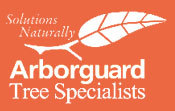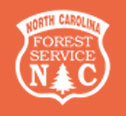The Tree Protection Ordinance: An Essential Tool
(September 09, 2020)
The benefits of maintaining tree canopy in developed urban and suburban areas are widely recognized, from mitigating urban heating, reducing stormwater runoff, and improving air quality, to improving mental health and presenting a more pleasant place to live and work.
Ideally, tree canopy will be distributed throughout a municipality, not just concentrated in parks or suburban areas. An essential tool for making that happen as development proceeds is a Tree Ordinance, which will usually address tree preservation in new development sites as well as tree planting.
There are many constituents who must interact with a tree ordinance and its outcomes, including the developers who must include it in their plans and costs, the municipal employees who must enforce it during and after construction, the property owners who must maintain it, and the citizens who will live with its results. Developing a tree ordinance should be an undertaking that involves representatives from all of these groups. The process can be one of many compromises in order to accommodate the concerns of everyone.
To address the many variables that can arise on a site, some flexibility should be built into the ordinance. Many municipalities base the quantity of trees to be preserved on a percent property size, with larger parcels requiring a larger percentage in tree preservation. Flexibility may take the form of allowances for some part of the required area to be provided in new trees planted rather than saved; reduced parking requirements to accommodate saved trees; credit for landscaping for trees saved in buffer yards; or payment-in-lieu for a portion of the requirements, paid into a fund to provide tree planting services in the municipality .
The ordinance should assign departmental or staff position responsibility for enforcement. The position and responsibilities of Urban Forester or City Arborist is often designated in the ordinance. Penalties or fines for failing to appropriately protect designated tree save areas during construction, or to maintain it once construction is complete, should be included. This section may also cover maintenance of trees in public rights of way or other public property, and penalties for damaging or removal of those trees.
Other items that may be included are a requirement for a certain percentage of native species or a requirement for a certain level of diversity among trees planted, a list of invasive non-natives not allowed for credit, requirements for documenting tree save areas, such as a plat filed with the Register of Deeds, and plan submittal requirements.





